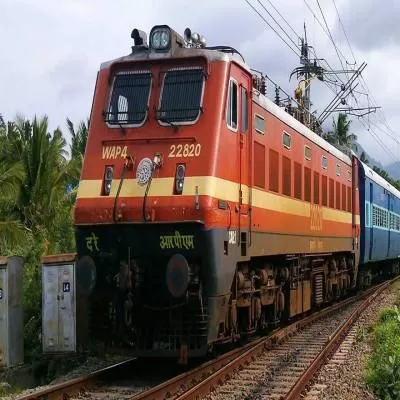

Ravindra Kumar Jain, Managing Director, Dedicated Freight Corridor Corporation of India Ltd. (DFCCIL) has announced the submission of detailed project reports (DPRs) for new freight corridors to the Railway Board. The proposed corridors are:
1. The East Coast Freight Corridor from Kharagpur (West Bengal) to Vijayawada (Andhra Pradesh) 2. The East-West Corridor from Kharagpur to Palghar (Maharashtra) 3. The North-South Freight Corridor from Vijayawada to Itarsi (Madhya Pradesh)
Spanning a combined distance of 4,300 kilometres, these projects are expected to cost around Rs 2,000 billion. These corridors will cater to specific commodities and cover crucial regions of the country. Two major multilateral agencies, the Japan International Cooperation Agency (JICA) and the World Bank, have shown interest in funding these projects. Although the railways have sufficient infrastructure funds, additional support from these agencies remains a viable option.
Jain highlighted the progress of the current Dedicated Freight Corridor (DFC), which is nearly complete at 96.4%. This 2,843-km corridor spans the Eastern and Western arms, traversing 56 districts in seven states, with a 60% increase in traffic over the past year.
In an interview with the source, Jain mentioned that 93.2% of the Western Dedicated Freight Corridor (WDFC) is finished, including feeder routes to various ports. Around 100 km remain incomplete, with 50% of this segment already done. The entire stretch is expected to be operational by December 2025, with contracts issued to ensure timely completion.
Currently, over 320 trains run daily on the DFC, with 200 on the Eastern DFC and 120 on the Western DFC. Jain anticipates this number to rise to 400 by year-end. The DFCs have created significant line capacity, with 40?50% currently utilised and the potential to increase to 150%. Each corridor can handle 120 trains in each direction, totalling 480 trains.
DFCCIL is expanding its scope beyond traditional cargo like coal, perishables, and auto parts to include e-commerce and LNG container movement. The organisation is also exploring ?Over Dimensional Cargo? (ODCs) and plans to start automobile transport along the Western DFC from Surat to Kanpur and beyond.
Prime Minister Narendra Modi inaugurated the DFC network on December 12, 2020, calling it a game changer for India in the 21st century and a catalyst for rapid national development. The DFC project aligns with the National Rail Plan, which aims to increase the railway?s modal share in India from 28% to 44% by 2051. It also supports the National Logistics Policy, aiming to reduce logistics costs from 15% of GDP to 8% by 2030.
These Dedicated Freight Corridor projects will unlock economic potential and decongest the saturated road network by promoting a shift to a more efficient rail transport system, significantly reducing highway congestion. (Source: Business Line & Logistics Insider)